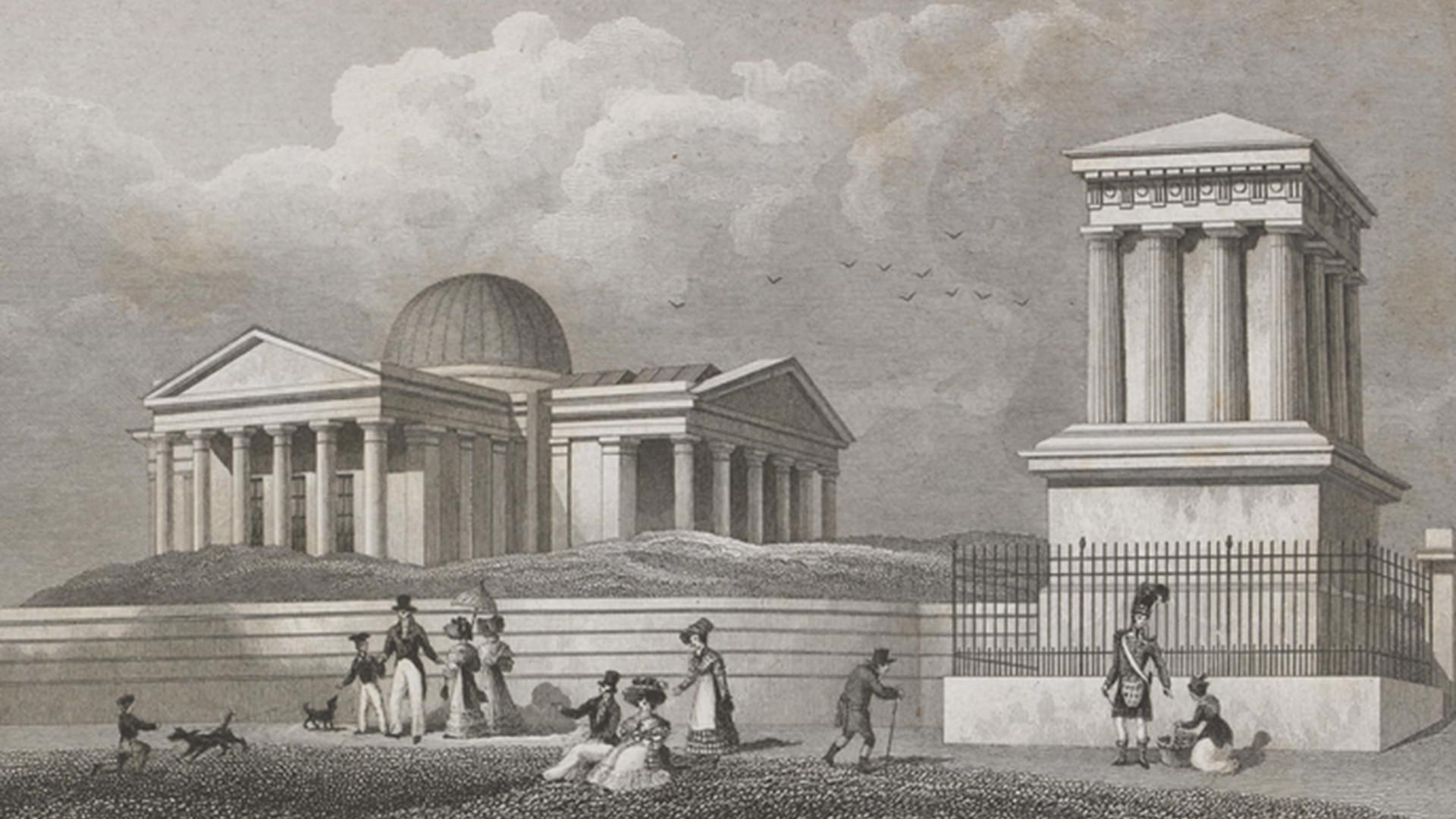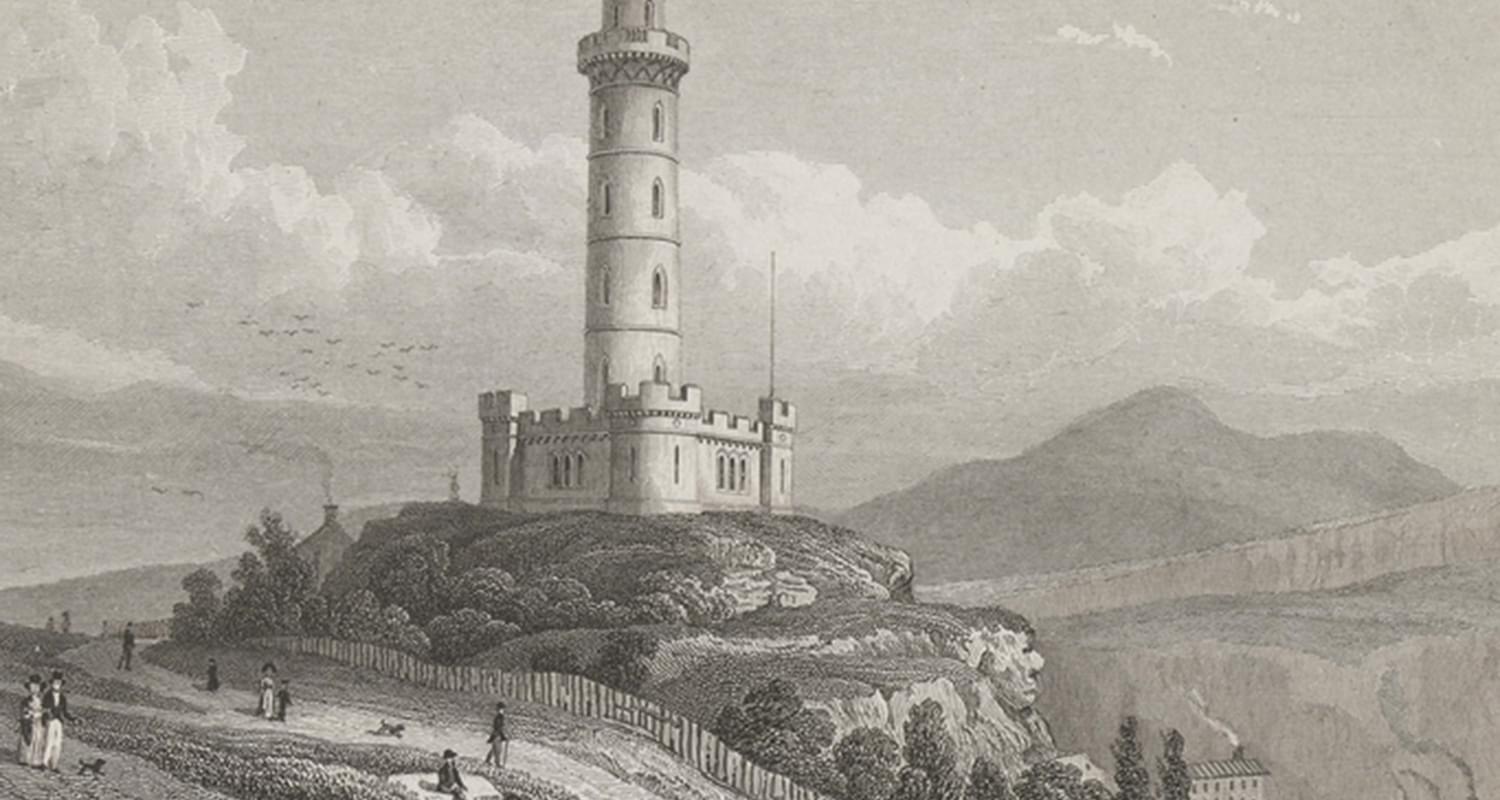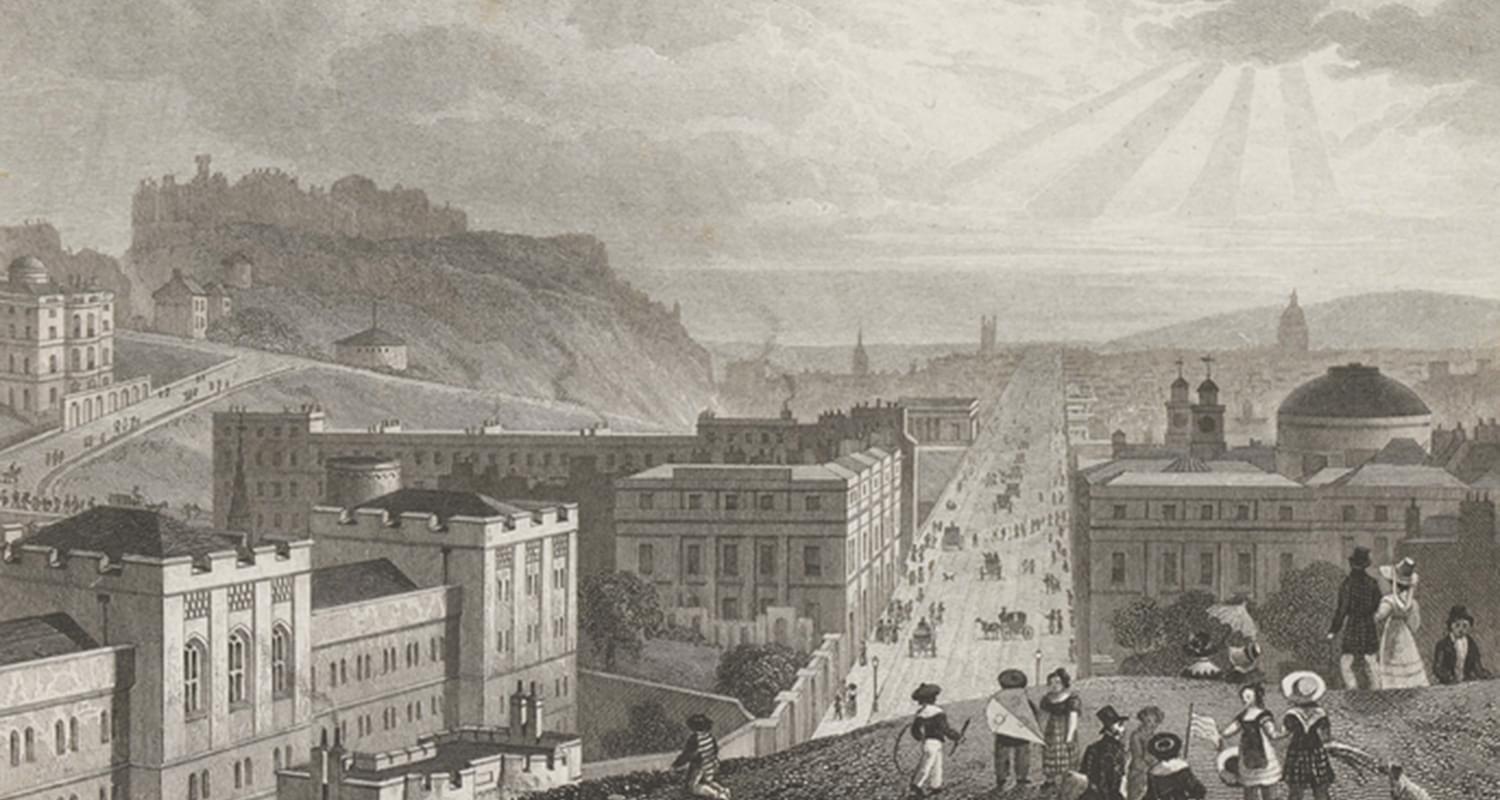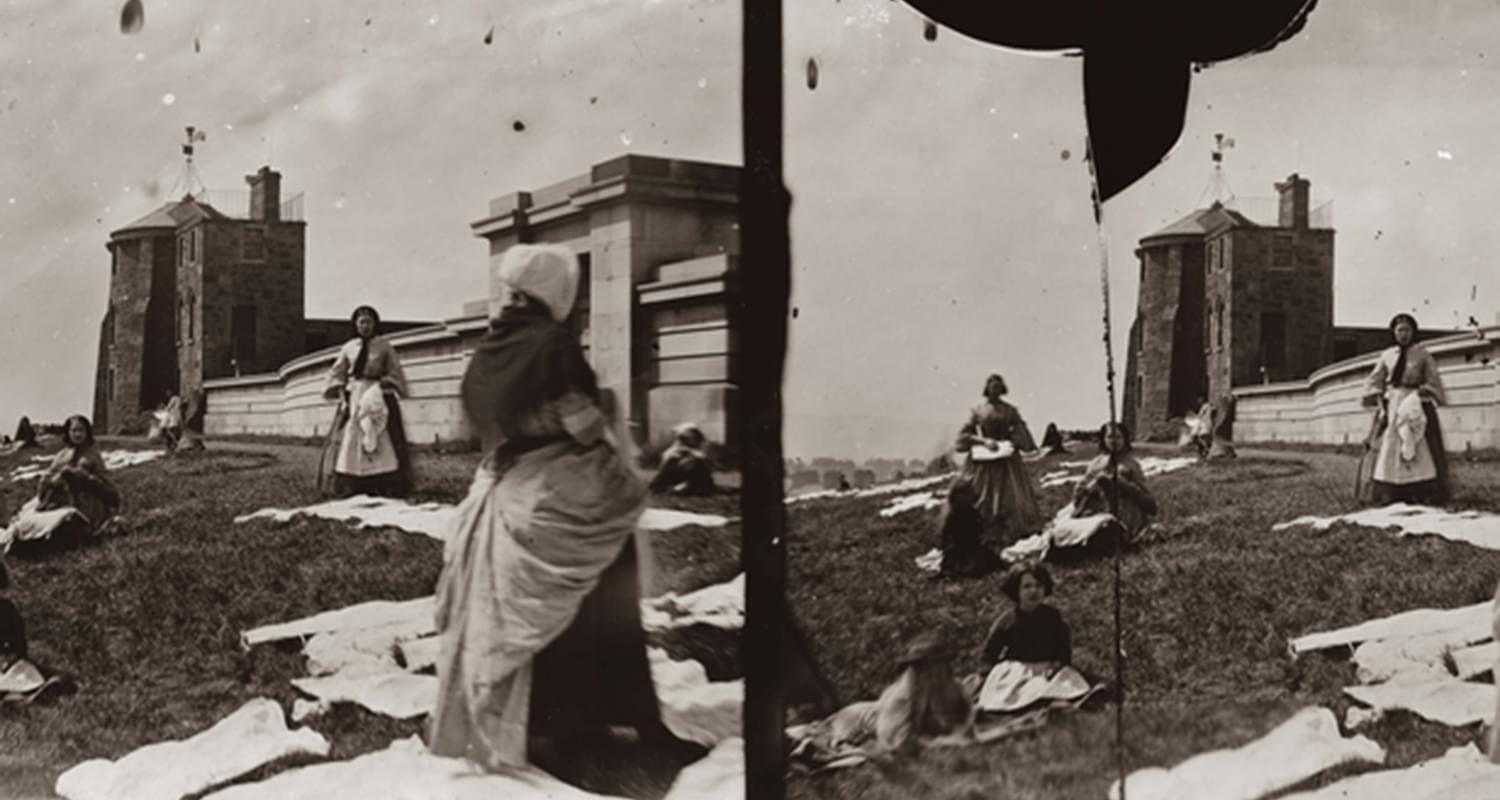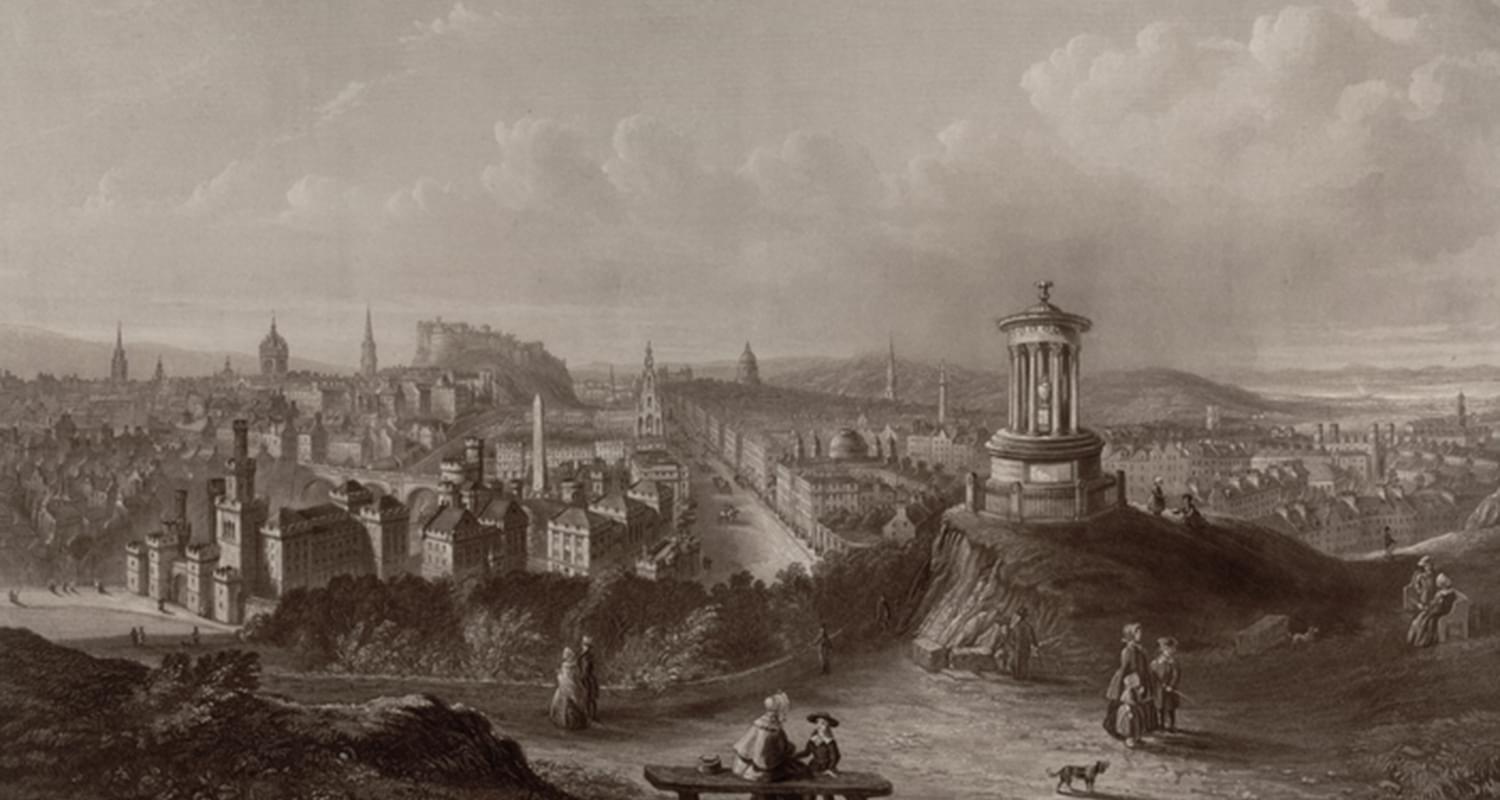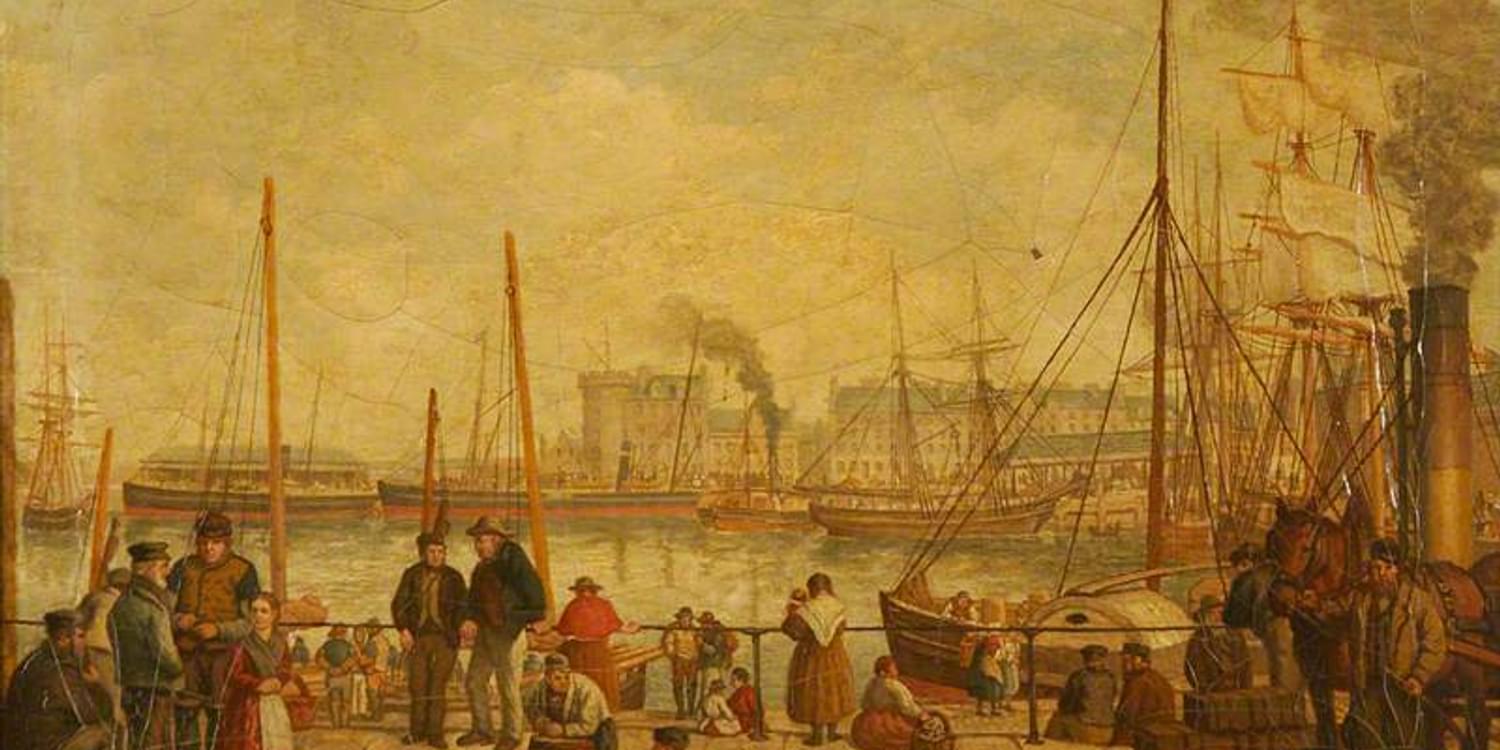The City Observatory
Calton Hill is the birthplace of astronomy and timekeeping in Edinburgh. The oldest surviving building on the site is the rounded gothic tower which now forms part of Observatory House – a remnant of the first attempt to build an observatory on top of the Hill in the 1770s.
It took another four decades for this project to be realised in the form of a new building designed by William Henry Playfair in 1818. The arrival of this temple to scientific innovation and discovery on Calton Hill marked a defining point in Scotland’s self-identity, as it sought greater prominence within Britain and its rapidly-expanding global empire.
Astronomy
On the west side of the site stands the unremarkable-looking Transit House, a small predecessor of Playfair’s observatory from 1812, which once housed an instrument for observing the transit of stars across the meridian. A larger version of this transit telescope was installed in the new observatory in 1831 and survives to this day, along with a 6-inch refracting telescope housed in the McEwan Dome on the observatory’s top floor.
Thomas Henderson and later Charles Piazzi Smyth led operations at the observatory for much of the 19th century under the title of Astronomer Royal for Scotland. Having been designated a Royal Observatory for most of its life, the site lost this moniker to the observatory on Blackford Hill in 1896, in part due to rising levels of light pollution from the New Town. Re-designated as the City Observatory, with the addition of a striking new Dome on the north-east corner of the site, the observatory was run by the amateur Astronomical Society of Edinburgh from the late 1930s until its closure in 2009.
Timekeeping and the Port of Leith
The observatory may have been conceived in the spirit of scientific discovery but for much if its working life its purpose was more practical and intimately linked to the expansion of maritime trade from the nearby Port of Leith. Transit telescopes were used to monitor passing celestial objects, which in turn provided accurate time by which sailors could set their chronometers (time pieces). The ‘politician’s clock’ – so called as it has two faces - which sailors once walked up Calton Hill to read, survives in the window of the Transit House.
In turn, accurate time facilitated accurate naval navigation and became a significant enabler for the expansion of trade and empire from the Port of Leith, which was a key importer and exporter of goods to and from slave plantations in the Caribbean, including sugar, rum, linen, and dried fish.
Collective and the City Observatory
Collective was established in 1984 as an organisation dedicated to the presentation of new art. We first became involved with the site after commissioning artists Kim Coleman and Jenny Hogarth to exhibit work in the Observatory during the 2010 Edinburgh Art Festival. In 2013, Collective moved to a temporary gallery space on Calton Hill and began fundraising to restore and develop the site in partnership with City of Edinburgh Council as a new centre for contemporary art. Scottish architecture practice Collective Architecture were invited to lead the renovation of Collective's new home, with the site opening to the public in November 2018.
Find out more about our work here.
